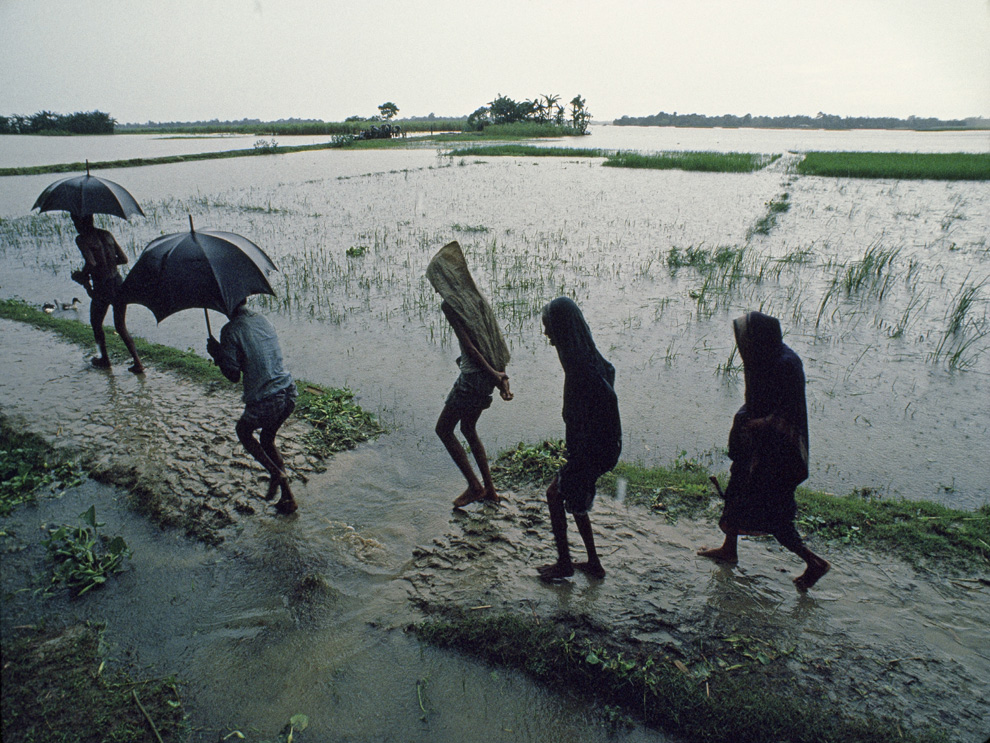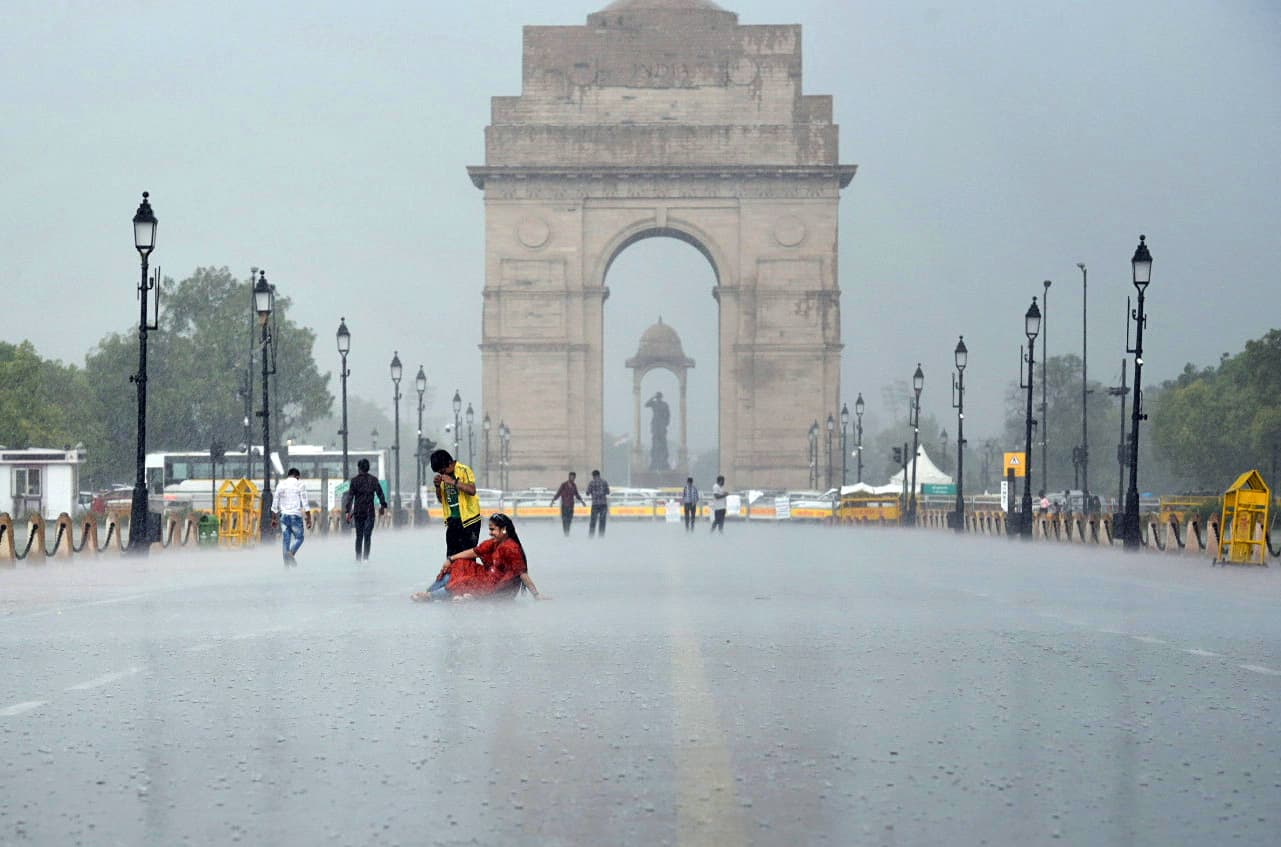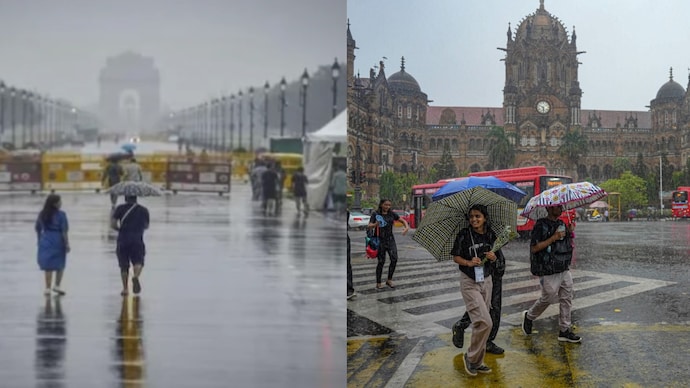Monsoon deficiency down to 28% from 47% in a week
First time since 1961, monsoon rain has covered both Mumbai and Delhi on the same day.
Monsoon deficiency down to 28% from 47% in a week:
According to the India Meteorological Department (IMD), the southwest monsoon has entered an “active mode” and has progressed into several states in India. Maharashtra, Rajasthan, Gujarat, Madhya Pradesh, Uttar Pradesh, Delhi, Punjab, and Haryana have all experienced the onset of monsoon rainfall. The IMD also reported that rainfall deficiency has decreased by 28%.
Mrutyunjay Mohapatra, the director-general of the IMD, stated that a low-pressure area is forming over the Bay of Bengal, along with active monsoon conditions. These weather patterns will result in widespread rainfall across eastern, central, northwest, and western India over three to five days.

The onset of the monsoon and the subsequent rainfall is significant for various regions in India. The monsoon season plays a crucial role in the country’s agricultural sector, providing much-needed water for crops and supporting agrarian activities. Farmers closely monitor the progress of the monsoon, as it determines the timing and distribution of rainfall across different parts of the country.
The decrease in rainfall deficiency is an encouraging development, as it indicates a more balanced distribution of precipitation. Adequate rainfall is essential for replenishing water reservoirs and groundwater levels and maintaining ecological balance.
The IMD’s forecast of widespread rainfall activities in the coming days suggests that several regions in India will receive substantial precipitation. This can positively affect agricultural productivity, water resources, and overall socio-economic conditions in these areas.

Residents, farmers, and relevant authorities need to stay updated on weather forecasts and take necessary precautions to ensure safety and mitigate any potential risks associated with heavy rainfall. Local authorities and disaster management agencies should remain vigilant and be prepared to respond effectively to any emergencies or adverse situations due to the monsoon.
Overall, the onset of the southwest monsoon and the projected increase in rainfall across multiple regions in India bring hope for improved agricultural conditions and water availability. As the monsoon progresses, its impact on various sectors of the economy and the population’s overall well-being will be closely monitored.
The recent monsoon rains have significantly reduced the cumulative rainfall deficiency during June 1-25 in India. The drought has decreased from 47% to 28% of the benchmark long-period average (LPA) in just a week.
A notable occurrence in this year’s monsoon is that Mumbai and Delhi experienced rainfall on the same day, a rare phenomenon. This simultaneous coverage of monsoon rain in both cities has not been observed since 1961.
According to Akshay Deoras, a research scientist at the National Centre for Atmospheric Science and the Department of Meteorology at the University of Reading in the United Kingdom, a low-pressure monsoon system is developing over the head of the Bay of Bengal.
This weather system is expected to bring heavy rain to several regions in the coming week, including Odisha, eastern and coastal Maharashtra, Chhattisgarh, Madhya Pradesh, and eastern Rajasthan.
The formation of the low-pressure monsoon system signifies a potential increase in rainfall activity in these areas. Heavy rainfall can positively affect agriculture, water resources, and overall socio-economic conditions. However, it is essential to remain vigilant and prepared for potential challenges due to intense precipitation, such as the risk of flooding and associated disruptions.
The information provided by meteorologists and researchers plays a crucial role in understanding and predicting the monsoon’s behaviour. Experts can provide valuable insights to aid in preparedness and response efforts by monitoring weather patterns and studying the development of low-pressure systems.
As the monsoon progresses, continued monitoring of rainfall patterns, along with effective water management strategies and disaster preparedness measures, will be necessary to maximize the benefits of the monsoon season while minimizing potential risks.

Scientists from the India Meteorological Department (IMD) have indicated that the monsoon is expected to cover the entire country approximately ten days earlier than its usual schedule of July 8. The timely arrival of the monsoon across the nation is crucial as it signifies the commencement of sowing activities for Kharif crops such as paddy, coarse cereals, pulses, and oilseeds.
Due to deficient monsoon rainfall, the sowing of Kharif crops has been delayed. This includes crops like paddy, pulses, oilseeds, cotton, and sugarcane. According to data from the agriculture ministry, as of June 23, there has been a 4.5% decline in sowing compared to the previous year, with 12.9 million hectares under cultivation.
The monsoon rains in July are particularly significant as they are essential for agricultural activities, especially planting. The timely and adequate rainfall during this period plays a crucial role in determining the success of crop cultivation. Farmers heavily rely on the monsoon to provide sufficient water for their fields, allowing them to sow their crops and ensure healthy growth.
The early arrival of the monsoon and the subsequent improvement in rainfall can have a positive impact on the sowing of Kharif crops. Adequate rainfall during the monsoon season is vital for agricultural productivity, water availability, and overall food security.
Efforts by farmers and the agriculture sector will be focused on taking advantage of the improved monsoon conditions to accelerate sowing activities and make up for the initial delays. The progress of the monsoon and its distribution across different regions of the country will continue to be monitored closely.
The monsoon covers the entire country earlier than usual, bringing hope for a successful kharif season and improved agricultural outcomes. However, continued monitoring of weather patterns, effective water management, and support to farmers will be crucial to optimize the benefits of the monsoon and mitigate any potential challenges.

The average annual coverage of all kharif crops, including cotton, sugarcane, coarse cereals, and jute, is typically around 109 million hectares (MH). However, the area under paddy cultivation has witnessed a decline of 35% to 1.07 MH, while pulses sowing has seen a marginal increase compared to the previous year, reaching 0.6 MH.
Private weather forecasting agency Skymet has predicted that the rainfall in July is expected to be “below normal,” quantitatively estimated at 95% of the long-period average (LPA). The Indian Meteorological Department (IMD) will likely announce its outlook for July later this week. The IMD’s initial forecast in April stated that the overall precipitation during the monsoon season (June-September) would be in the “normal” range, at 96% of the LPA.
Skymet had previously suggested that this year’s monsoon rainfall could be “below normal” at 94% of the LPA. Rainfall between 96-104% of the LPA is considered “normal.”
In terms of regional variations, the monsoon deficiency has been 45% in central India and 49% in the south peninsula so far. However, due to widespread rainfall following the cyclonic storm ‘Biparjoy’ over the main part of Rajasthan, the northwest region has received 33% more rainfall than the standard benchmark.
It is worth noting that the southwest monsoon season, which spans from June to September, accounts for approximately 75% of the country’s annual rainfall. The performance of the monsoon is of great significance to agriculture, water resources, and overall economic activities in India.
While the IMD’s forecast for the monsoon season remains in the “normal” range, continued monitoring of rainfall patterns and regional variations will be essential to assess the impact on crop cultivation, water availability, and overall agricultural productivity.




